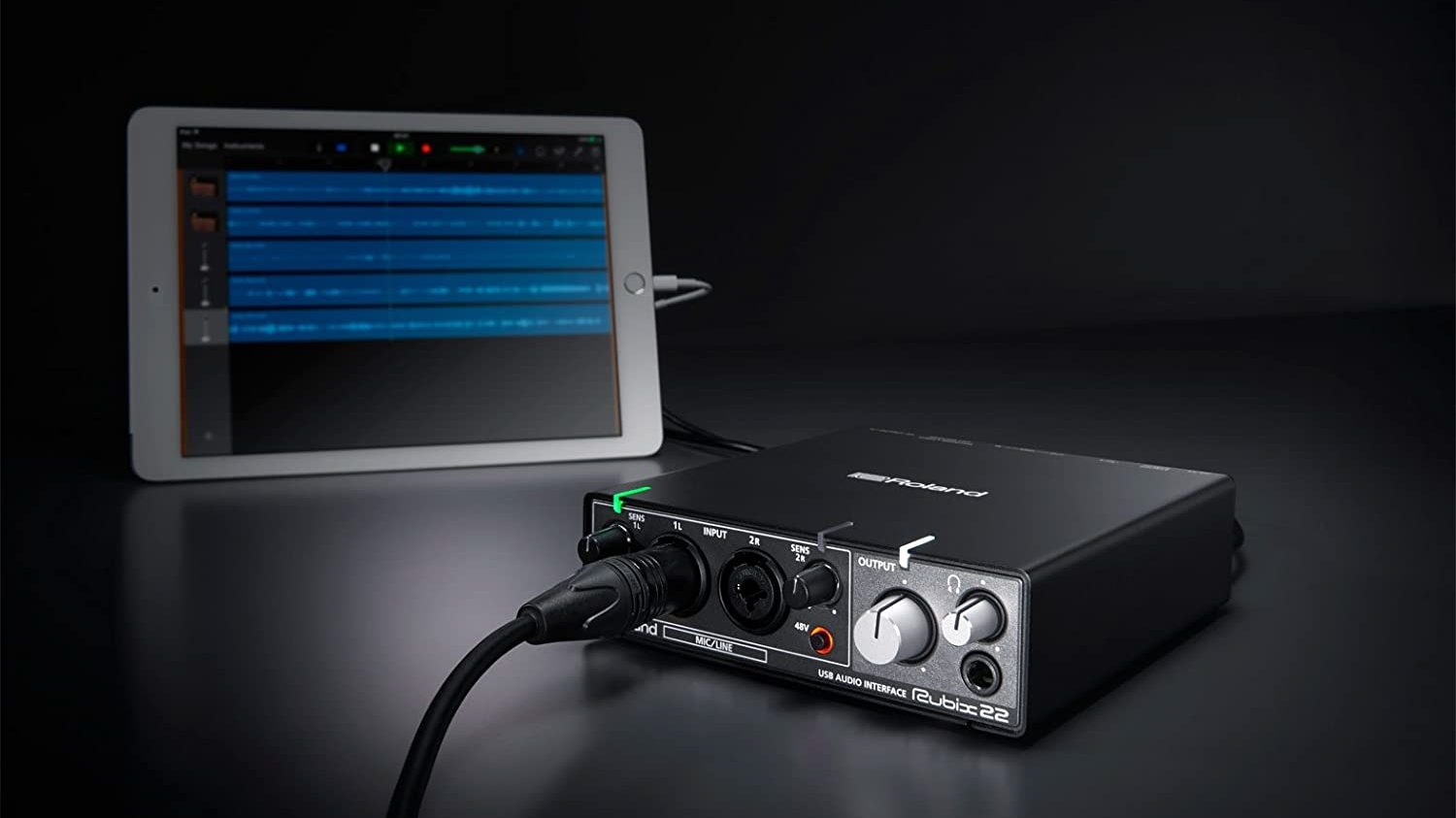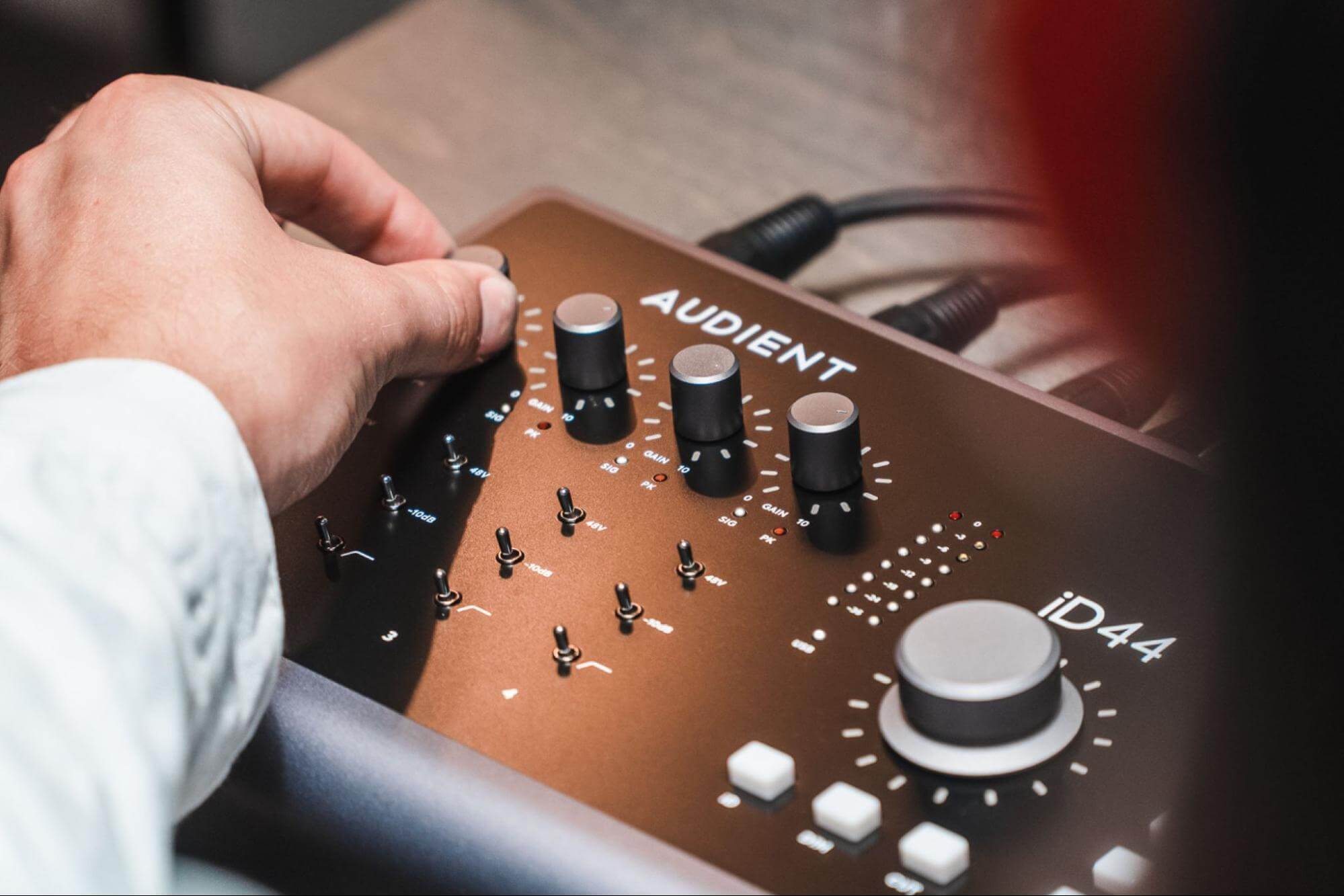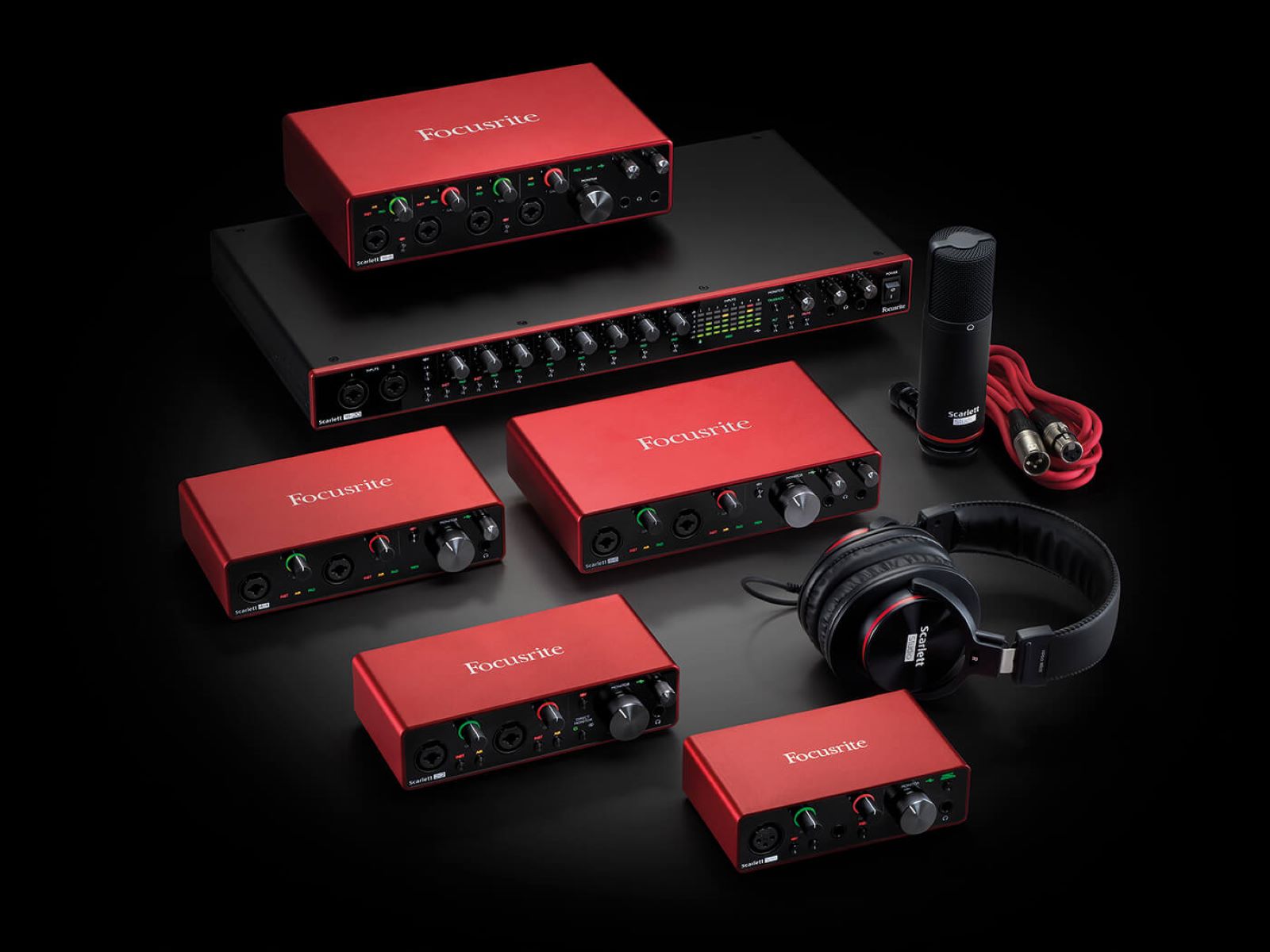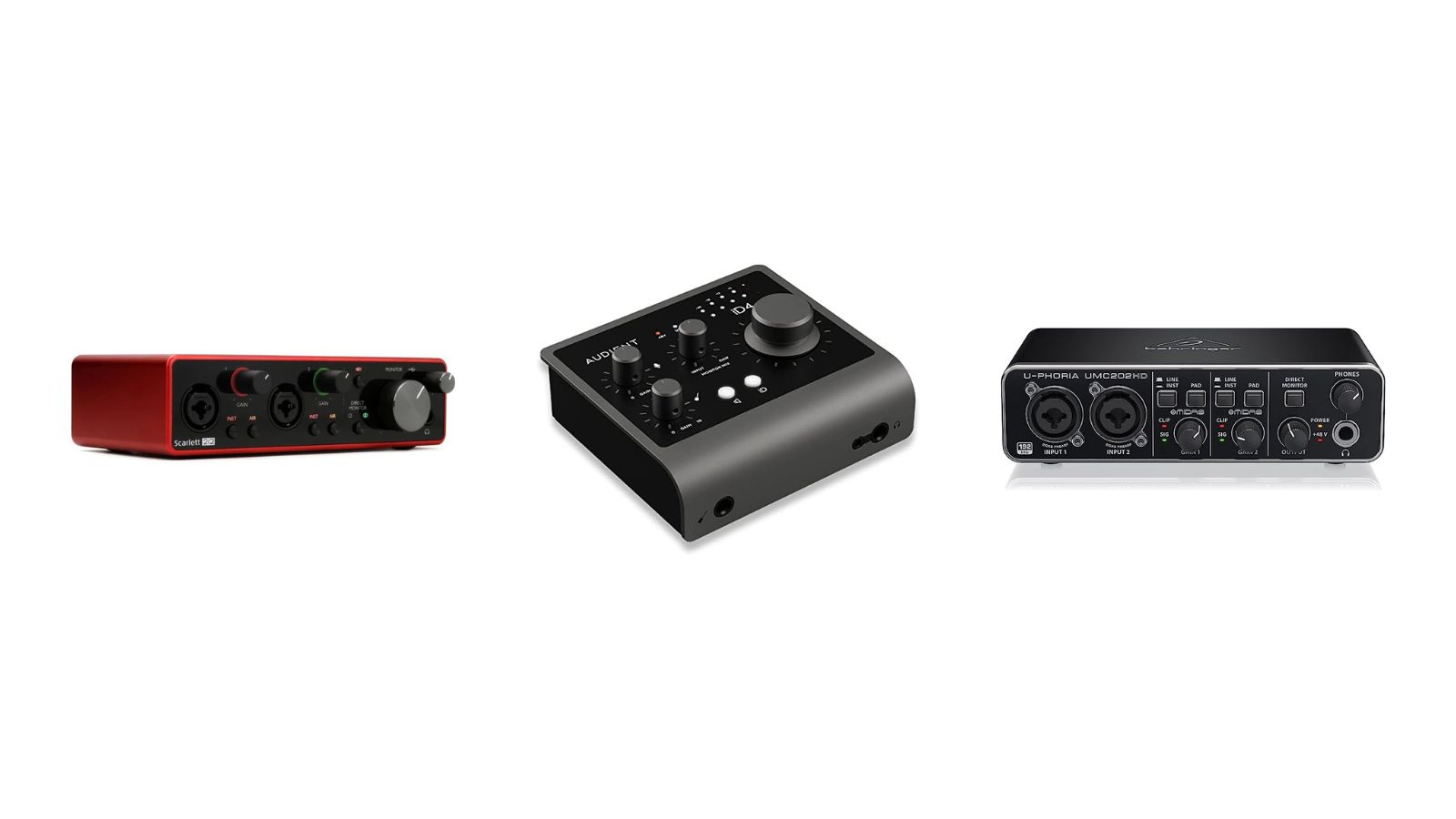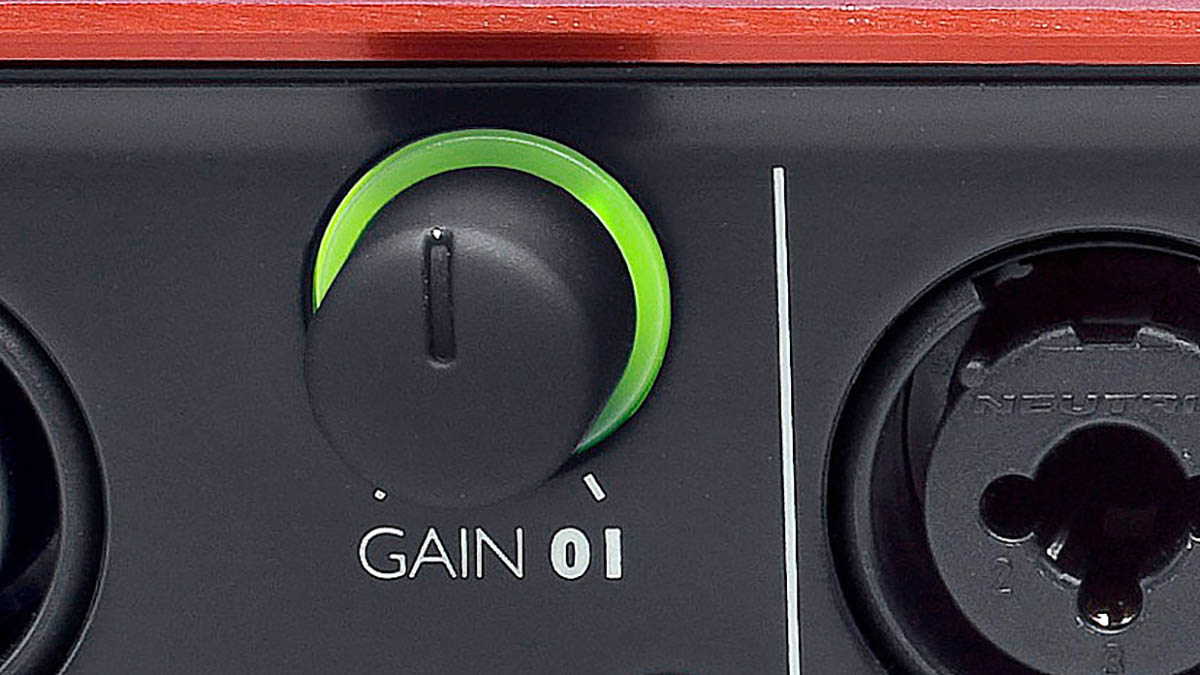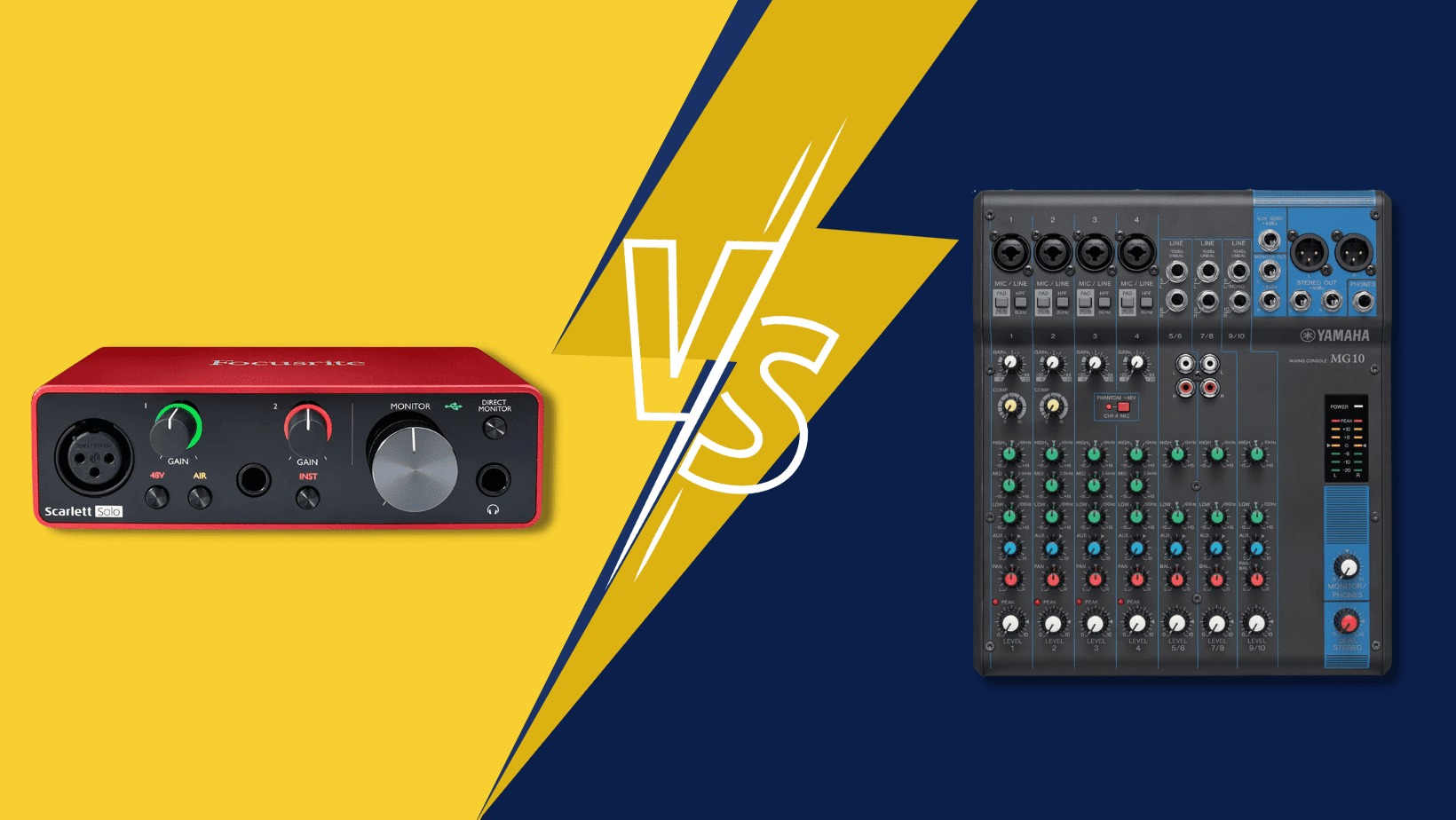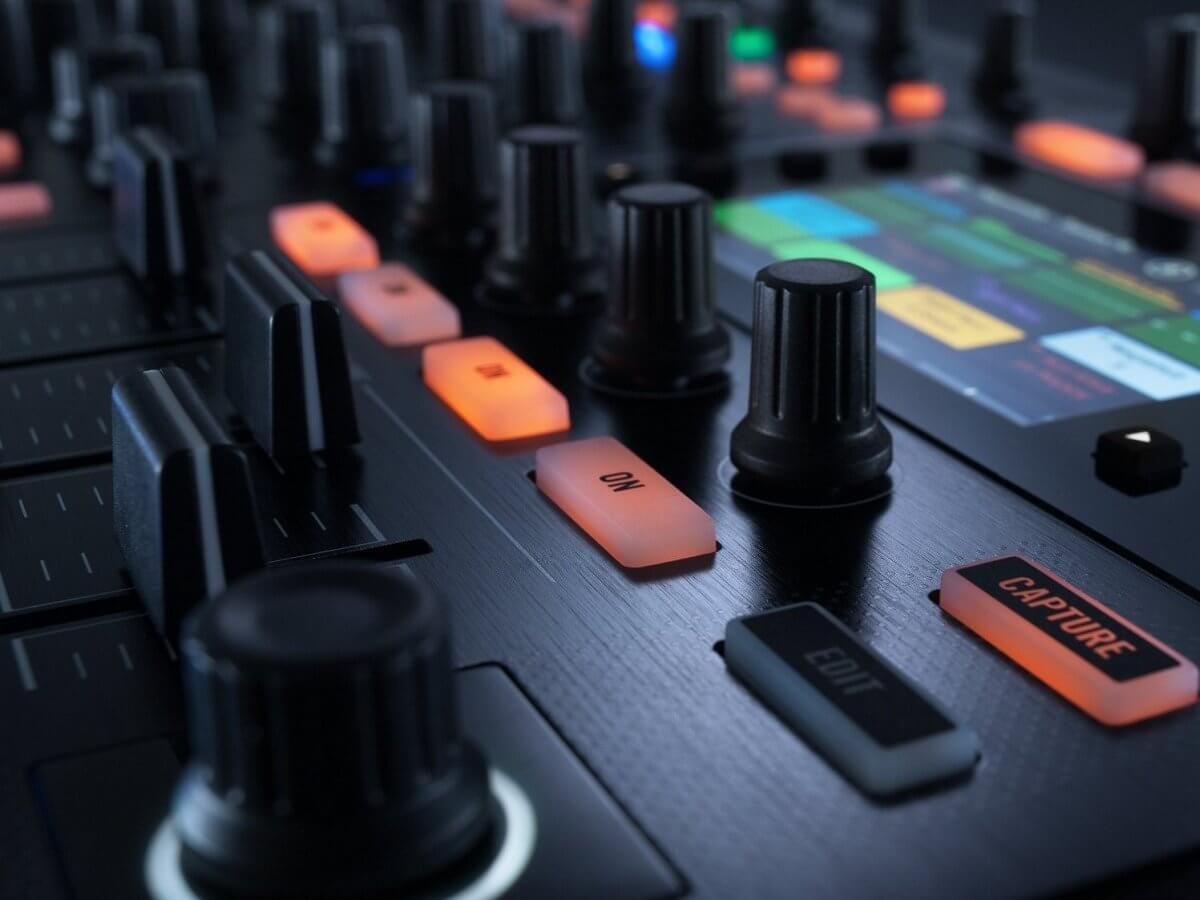Home>Production & Technology>Audio Interface>What Is Pad On Audio Interface


Audio Interface
What Is Pad On Audio Interface
Published: February 5, 2024
Discover what a pad on an audio interface is and how it enhances your recording experience. Explore the benefits of using an audio interface for professional sound quality.
(Many of the links in this article redirect to a specific reviewed product. Your purchase of these products through affiliate links helps to generate commission for AudioLover.com, at no extra cost. Learn more)
Table of Contents
Introduction
Welcome to the world of audio interfaces, where every piece of technology plays a vital role in delivering the best sound quality possible. If you’re a podcaster, musician, or sound engineer, you’ve likely come across the term “pad” when exploring different audio interface options. But what exactly is pad on an audio interface?
Put simply, a pad on an audio interface is a feature that allows you to attenuate the incoming signal level. It serves as a safeguard against clipping and distortion, ensuring that you capture clean and accurate recordings. While it may seem like a small component, the pad can make a significant difference in the overall sound quality of your recordings.
In this article, we will delve into the essential aspects of pads on audio interfaces, discussing their purpose, functionality, benefits, and debunking common misconceptions. By the end, you’ll have a comprehensive understanding of why the pad is such a crucial feature in your audio interface setup.
Definition of Pad on Audio Interface
In the context of audio interfaces, a pad refers to an electronic circuit or switch that attenuates the incoming signal level. It is designed to reduce the amplitude of a high-level audio signal before it enters the audio interface’s preamp or analog-to-digital converter (ADC). This attenuation prevents the signal from overloading the circuitry and causing distortion or clipping.
The pad is typically measured in decibels (dB), with common settings including -10dB, -20dB, or even -30dB. When engaged, the pad effectively lowers the signal level by the specified amount, allowing you to safely record hot signals without compromising the sound quality.
The pad on an audio interface is usually a physical switch located on the front or back panel. Some interfaces may have a software-based pad control, which allows for remote adjustment through the software interface. Regardless of the implementation, the pad serves the same purpose: to ensure clean and undistorted audio recordings.
Purpose of Pad on Audio Interface
The primary purpose of the pad on an audio interface is to prevent clipping and distortion caused by high-level audio signals. When working with sound sources that produce a strong output, such as electric guitars, drum machines, or microphones with high sensitivity, the input signal may exceed the maximum level that the audio interface can handle without distortion.
By engaging the pad, you effectively reduce the signal level before it enters the audio interface’s preamp or ADC. This attenuation ensures that the signal remains within the optimal range, preventing the circuitry from overloading and distorting the audio. In other words, the pad protects against signal overload and allows you to capture clean, undistorted recordings.
Moreover, the pad on an audio interface is particularly useful when recording loud sources or when connecting devices with mismatched output levels. It allows you to accommodate a wider range of input levels by bringing down the hot signals to a more manageable level for the audio interface’s electronics.
Another purpose of the pad is to maintain the signal-to-noise ratio (SNR) of your recordings. By reducing the signal level, you effectively bring down the noise floor along with it. This results in a better SNR, allowing for cleaner, more professional recordings.
Overall, the pad on an audio interface serves as a crucial tool to ensure the fidelity and integrity of your audio recordings. It allows you to work with a variety of sources, from the subtle nuances of a whisper to the thunderous roar of a guitar amplifier, without compromising the quality of your recordings.
How Pad Works on an Audio Interface
To understand how the pad works on an audio interface, let’s take a closer look at its internal mechanism. When engaged, the pad introduces an additional attenuation stage in the signal path, typically before the preamp or ADC.
The pad consists of a resistor network or a voltage divider circuit that reduces the voltage level of the incoming signal. This attenuation is achieved by diverting a portion of the signal energy to ground, effectively lowering its amplitude without altering its frequency response. The amount of attenuation is determined by the dB rating of the pad, such as -10dB or -20dB.
When an audio signal passes through the pad, it is essentially “trimmed” down to a more manageable level. This ensures that the audio interface’s electronics are not overwhelmed by hot signals, preventing distortion and clipping. The pad essentially functions as a safety mechanism, allowing you to work with a wide range of signal levels while preserving the integrity of your recordings.
In addition to the attenuation, another essential aspect of how the pad works is impedance matching. Impedance refers to the measure of resistance that a circuit presents to the flow of alternating current (AC). Different audio equipment, such as microphones and instruments, have different impedance characteristics. If there is a mismatch between the source impedance and the input impedance of the audio interface, it can result in signal degradation and loss of fidelity.
The pad on an audio interface also helps to address this impedance mismatch. It acts as a bridging element, adjusting the impedance to match the characteristics of the connected source device. This enables efficient signal transfer and minimizes the potential for signal degradation.
By combining attenuation and impedance matching, the pad on an audio interface ensures that the incoming signal is optimized for recording. It allows you to capture the nuances and dynamics of your audio sources accurately, while maintaining the overall integrity and fidelity of the recordings.
Benefits of Using Pad on Audio Interface
The pad feature on an audio interface offers several benefits that contribute to the overall quality and flexibility of your recordings. Let’s explore some of the key advantages of using a pad:
- Prevents Clipping and Distortion: The primary benefit of using a pad is that it protects against signal overload, ensuring clean and undistorted recordings. By attenuating the signal level, the pad prevents the audio interface’s electronics from becoming overwhelmed by hot signals, which can result in clipping and distortion.
- Accommodates High-Level Sources: The pad allows you to capture high-level sources, such as electric guitars or drum machines, without compromising the audio quality. It enables you to work with a wide range of input levels and maintain the integrity of the sound, regardless of how loud or powerful the source may be.
- Improves Signal-to-Noise Ratio: By reducing the signal level, the pad also brings down the noise floor. This improves the signal-to-noise ratio (SNR) of your recordings, resulting in cleaner and more professional audio quality.
- Preserves Dynamic Range: The pad helps preserve the dynamic range of your recordings by allowing you to capture both the softest and loudest parts of the audio source without distortion. It ensures that the full range of dynamics is faithfully reproduced in your recordings.
- Enables Connection of Mismatched Devices: In situations where you need to connect devices with mismatched output levels or impedance characteristics, the pad comes in handy. It helps bridge the impedance gap, allowing for efficient signal transfer and minimizing signal degradation.
- Enhances Versatility: The pad adds versatility to your audio interface setup by making it compatible with a broader range of audio sources. It gives you the flexibility to work with different instruments and microphones, regardless of their output levels, without compromising the quality of your recordings.
Overall, the pad on an audio interface is a valuable tool that ensures optimal signal handling, protects against distortion, and preserves the fidelity of your recordings. It provides you with greater flexibility, improved audio quality, and the ability to capture both delicate nuances and powerful performances with confidence.
Common Misconceptions about Pad on Audio Interface
While the pad feature on an audio interface is widely recognized for its benefits, there are also some common misconceptions surrounding its usage. Let’s address these misconceptions and provide clarity:
- Misconception 1: Pad affects the tone or frequency response: One common misconception is that using a pad on an audio interface alters the tone or frequency response of the audio signal. However, this is not the case. The pad is designed to only attenuate the signal level, without introducing any EQ or tone-shaping effects. It maintains the integrity of the audio source, preserving the original tone and frequency response.
- Misconception 2: Pad eliminates the need for proper gain staging: Some people believe that enabling the pad eliminates the need for careful gain staging. However, proper gain staging is still essential for optimal recording quality. While the pad protects against signal overload, it does not replace the need to set appropriate input levels and gain settings to achieve the best signal-to-noise ratio.
- Misconception 3: Pad is only necessary for loud sources: While it is true that the pad is particularly useful for recording high-level sources, it is not exclusively limited to loud sources. Even with quieter audio sources, there can be occasional spikes or moments of high amplitude that can benefit from pad attenuation. The pad provides an added level of protection and control, regardless of the overall volume of the audio source.
- Misconception 4: Pad eliminates clipping entirely: Although the pad helps prevent clipping and distortion, it does not completely eliminate the possibility of clipping. If the signal level is already too high before entering the audio interface, even with the pad engaged, there is still a chance of exceeding the maximum input level and causing distortion. Proper gain staging and monitoring of input levels are still necessary to avoid clipping.
- Misconception 5: Pad is only applicable to certain genres or recording scenarios: The notion that the pad feature is only relevant for specific musical genres or recording scenarios is a misconception. The pad can be beneficial in various situations, regardless of the genre or style of music being recorded. It provides an additional level of control and flexibility, ensuring clean and distortion-free recordings across different genres and applications.
By debunking these common misconceptions, we can better understand the true purpose and functionality of the pad on an audio interface. It is a valuable tool that preserves the integrity of the audio signal and allows for greater flexibility and control in recording various sources.
Examples of Pad on Audio Interface
Let’s explore a few examples of how the pad feature on an audio interface can be utilized in different recording scenarios:
- Recording Electric Guitars: When recording electric guitars, especially with high-output pickups or distortion pedals, the pad can be essential. It prevents the signal from overloading the audio interface’s input, ensuring clean and distortion-free recordings while maintaining the expressive dynamics of the guitar.
- Capturing Dynamic Vocals: Vocalists with powerful and dynamic voices can benefit from the pad feature. It allows them to deliver their full range of expression without worrying about clipping or distortion. The pad ensures that the audio interface can handle the dynamics of the vocal performance, resulting in a professionally recorded vocal track.
- Recording Loud Drum Kits: Drummers who play with intensity and have a heavy hitting style can generate very loud signals. By engaging the pad on the audio interface, you can lower the level of the drum microphones, preventing the audio interface from clipping and maintaining a clean and balanced drum recording.
- Using High-Sensitivity Microphones: Some microphones, such as ribbon or dynamic microphones, have high sensitivity levels. In scenarios where the source being recorded is very loud, using the pad on the audio interface can ensure that the microphone captures the signal accurately without distortion or degradation.
- Connecting Devices with Mismatched Output Levels: When connecting different audio devices, such as mixers, preamps, or external processors, the output levels may vary. The pad on the audio interface can help compensate for this mismatch by attenuating the higher-level signal from the output device, allowing for proper signal alignment and preventing distortion.
These examples highlight the versatility and importance of the pad feature on an audio interface. Whether you’re recording guitars, vocals, drums, or working with different audio devices, the pad ensures optimal signal handling and clean recordings, regardless of the source’s characteristics or output levels.
Conclusion
The pad feature on an audio interface is an indispensable tool for ensuring clean, undistorted recordings. It allows you to attenuate high-level signals, protecting against clipping and distortion while maintaining the integrity and fidelity of your audio sources.
Throughout this article, we’ve explored the definition, purpose, functionality, benefits, and misconceptions surrounding pad on an audio interface. We’ve learned that the pad serves as a safeguard against signal overload, accommodating a wide range of input levels and maintaining optimal signal-to-noise ratio.
The pad also allows for impedance matching, ensuring efficient signal transfer and minimizing signal degradation when connecting devices with mismatched output levels. Additionally, we’ve debunked common misconceptions about the pad, clarifying its role in signal attenuation and its impact on tone and frequency response.
By utilizing the pad, you have the flexibility to record various sources, from powerful electric guitars to dynamic vocals and loud drum kits, without compromising audio quality. You can capture the full range of dynamics and nuances, delivering professional recordings with confidence.
Overall, the pad feature on an audio interface is a crucial tool that enhances your recording capabilities. It provides control, protection, and versatility, allowing you to focus on capturing the best audio performance without worrying about clipping or distortion. So, be sure to make use of the pad on your audio interface and elevate the quality of your recordings.



